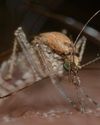Turning Polystyrene- a Plastic Waste into Treasure with Sunlight and LEDs
Scientific India
|March - April 2025
Plastics vary in their recyclability, with certain types and colors being more challenging to recycle than others.
Black foam and black coffee lids often made of polystyrene typically end up in landfills because their color additives hinder proper sorting. Polystyrene is a versatile polymer widely used in packaging, insulation and consumer goods. Despite its utility, polystyrene waste poses a significant environmental challenge due to its non-biodegradability and widespread use. Particularly problematic are black and colored polystyrene, which are difficult to recycle due to their pigmentation and the complexity of sorting processes. Recent advancements in photochemical techniques using sunlight or white light-emitting diodes (LEDs) have opened up pathways for transforming this waste into reusable starting materials presenting a sustainable solution to the growing plastic waste crisis.
Challenges with Black and Colored Polystyrene Recycling Pigmentation and Sorting Difficulties:
Black and colored polystyrene often contain dyes and pigments that hinder traditional recycling methods like infrared detection in sorting facilities. These results in such waste frequently ending up in landfills or being incinerated.
Chemical Stability:
Polystyrene's chemical stability while beneficial for product durability makes it resistant to breakdown under standard environmental conditions.
Environmental Impact:
Improper disposal of polystyrene contributes to pollution and microplastics formation, harming ecosystems and wildlife.
These challenges necessitate innovative recycling methods capable of addressing the limitations of traditional approaches.
Photochemical Degradation of Polystyrene:
This story is from the March - April 2025 edition of Scientific India.
Subscribe to Magzter GOLD to access thousands of curated premium stories, and 10,000+ magazines and newspapers.
Already a subscriber? Sign In
MORE STORIES FROM Scientific India
Scientific India
Japanese physicists were the first to measure the most tolerant entanglement state, the W state
There are many unusual things that happen in the world of quantum physics.
3 mins
September - October 2025

Scientific India
The Fifth Force: Could It Unlock the Secret of Dark Matter?
What if the universe is powered by a force we've never seen before? For centuries, science has explained nature with four fundamental forces.
3 mins
September - October 2025

Scientific India
A flu test you can chew
As flu season nears in the northern hemisphere, scientists are exploring a surprising new way to detect infection: through taste.
1 mins
September - October 2025

Scientific India
Lab-Grown Kidney Brings Artificial Organ Dream Closer to Reality
In a major leap toward bioengineered organ replacement, scientists have successfully grown human kidney 'assembloids' in the laboratory that mimic key structural and functional features of natural kidneys.
1 min
September - October 2025

Scientific India
Your pumpkin might be hiding a toxic secret
Pumpkins, squash, zucchini, and other members of the gourd family have a surprising trait: they can take up pollutants from the soil and store them in their edible parts.
1 mins
September - October 2025

Scientific India
2025 Nobel Prize in Physics Reveals Quantum Secrets in Superconducting Circuits
The 2025 Nobel Prize in Physics has been awarded to John Clarke, Michel H. Devoret, and John M. Martinis for their pioneering experiments that brought quantum mechanics from the invisible atomic world to the macroscopic scale a system large enough to hold in your hand.
1 mins
September - October 2025

Scientific India
Genomic Evidence Redefines the Evolutionary Age of Mosquitoes
A new genetic analysis has shaken up what we thought we knew about one of humanity's most notorious pests the mosquito.
1 min
September - October 2025

Scientific India
Nobel Prize in Chemistry 2025: Building Molecular Architectures with Room to Breathe
In a scientific breakthrough that bridges molecular design with planetary-scale problems, the 2025 Nobel Prize in Chemistry has been awarded to Susumu Kitagawa, Richard Robson, and Omar Yaghi.
1 mins
September - October 2025

Scientific India
Guardians of Immunity: Nobel Prize 2025 Honors Discoveries that Keep the Immune System in Check
The 2025 Nobel Prize in Physiology or Medicine has been awarded to Mary E. Brunkow, Fred Ramsdell, and Shimon Sakaguchi for their groundbreaking discoveries in the field of peripheral immune tolerance a crucial mechanism that prevents the body's immune system from turning against itself.
1 mins
September - October 2025

Scientific India
'Is cold nuclear fusion feasible?
In early May 1989, two chemists from the University of Utah, Pons and Fleischmann, arrived in Washington, U.S.A. The aim is to present their findings to members of the US Congress.
3 mins
September - October 2025
Listen
Translate
Change font size

